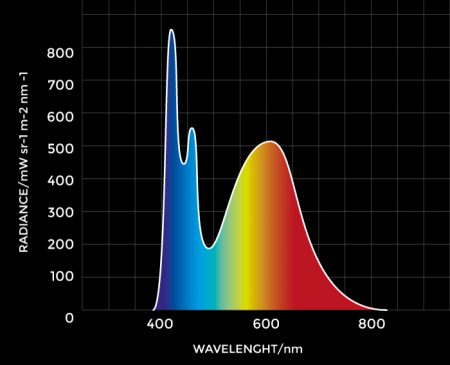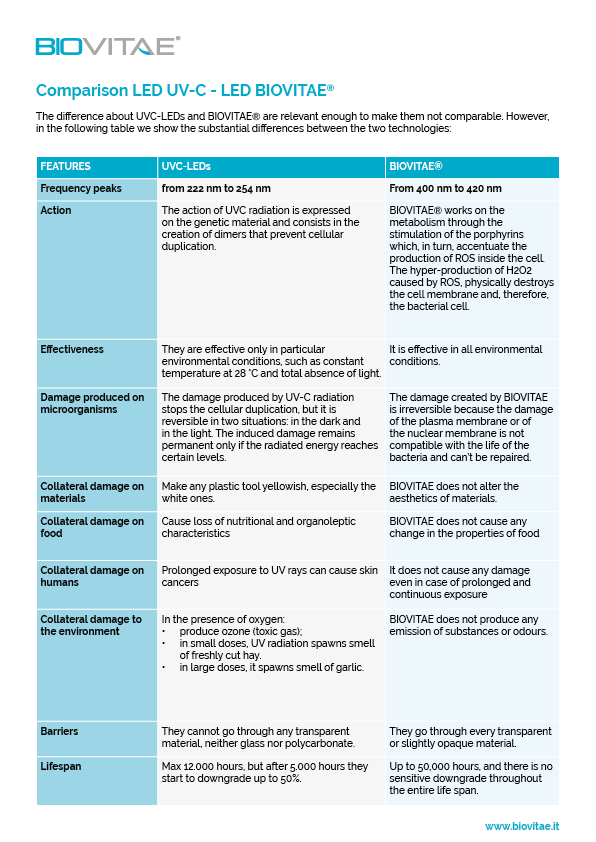BIOVITAE® is a LED microbicidal light (no-UV)
BIOVITAE® is a patented technology that, thanks to the emission of specific frequencies of the visible spectrum, sanitizes the environment and the surfaces from germs – without sterilizing, as it would be harmful to our health – and controls bacterial proliferation, acting in synergy with the natural resiliency of our immune system. BIOVITAE® is effective on GRAM+ and GRAM– bacteria, fungi, spores, and moulds. It safely prevents the development of infectious outbreaks. BIOVITAE® is not harmful to people or animals under prolonged and continuous use. This is certified through its compliance with IEC 62471 RG 0 directive.
(Patents n. WO2017179082 and n. WO2018020527)
The emission of the patented light frequencies of BIOVITAE® stimulates the porphyrins of the bacteria by activating an uncontrollable METABOLIC REACTION. The endogenous porphyrins are excited and interact with oxygen, producing reactive oxygen species (ROS) that cause oxidative damage to the cell membrane of the microbes and, therefore, their destruction by photodynamic inactivation.
This figure shows the range of BIOVITAE® frequencies (NON-UV) that has proved to be harmful to bacteria and other microorganisms (fungi, spores, moulds).
Comparison BIOVITAE® – LED UV-C
Until now, the most known and widespread antimicrobial light irradiation is that with wavelengths of the ultraviolet (UV) light spectrum, in particular from UV-C radiation (240 and 260 nm), which is traditionally used for disinfection, in particular for medical devices and airplanes. Although these methods can be effective, the costs associated with them, the loss of nutritional content of the food, changes in its taste and consistency and the concern that may be carcinogenic, have led the research to seek alternative methods.
More recently, the antimicrobial properties of the visible light of the blue-violet spectrum have become an area of increasing interest in research and numerous laboratory studies have shown that light at 405 nm, and the broader lengths in the 400-420 nm region, have a wide spectrum of activity, including the ability to inactivate a wide range of organisms, including antibiotic-resistant bacterial strains.

